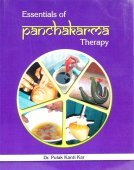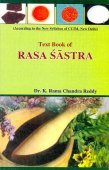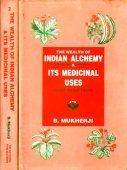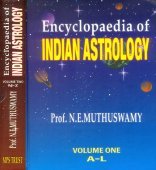Sushruta, Suśruta, Su-shruta: 13 definitions
Introduction:
Sushruta means something in Buddhism, Pali, Hinduism, Sanskrit, Jainism, Prakrit. If you want to know the exact meaning, history, etymology or English translation of this term then check out the descriptions on this page. Add your comment or reference to a book if you want to contribute to this summary article.
The Sanskrit term Suśruta can be transliterated into English as Susruta or Sushruta, using the IAST transliteration scheme (?).
In Hinduism
Purana and Itihasa (epic history)
Source: archive.org: Puranic EncyclopediaSuśruta (सुश्रुत).—Reputed master of the science of Surgery, Suśruta was the grandson of King Gādhi and son of Viśvāmitra. (Anuśāsana Parva, Chapter 4, Verse 55).
He is the author of Suśrutasaṃhitā, one of the famous texts on Āyurveda.
Source: Cologne Digital Sanskrit Dictionaries: The Purana Index1a) Suśruta (सुश्रुत).—A son of Suvarcas (Subhāṣa, Viṣṇu-purāṇa) and father of Jaya.*
- * Brahmāṇḍa-purāṇa III. 64. 21; Viṣṇu-purāṇa IV. 5. 31.
1b) A son of Śruta.*
- * Vāyu-purāṇa 89. 21.

The Purana (पुराण, purāṇas) refers to Sanskrit literature preserving ancient India’s vast cultural history, including historical legends, religious ceremonies, various arts and sciences. The eighteen mahapuranas total over 400,000 shlokas (metrical couplets) and date to at least several centuries BCE.
In Buddhism
Tibetan Buddhism (Vajrayana or tantric Buddhism)
Source: Wisdom Library: Tibetan BuddhismSuśruta (सुश्रुत) is the name of a Pratyekabuddha mentioned as attending the teachings in the 6th century Mañjuśrīmūlakalpa: one of the largest Kriyā Tantras devoted to Mañjuśrī (the Bodhisattva of wisdom) representing an encyclopedia of knowledge primarily concerned with ritualistic elements in Buddhism. The teachings in this text originate from Mañjuśrī and were taught to and by Buddha Śākyamuni in the presence of a large audience (including Suśruta).

Tibetan Buddhism includes schools such as Nyingma, Kadampa, Kagyu and Gelug. Their primary canon of literature is divided in two broad categories: The Kangyur, which consists of Buddha’s words, and the Tengyur, which includes commentaries from various sources. Esotericism and tantra techniques (vajrayāna) are collected indepently.
In Jainism
General definition (in Jainism)
Source: archive.org: TrisastisalakapurusacaritraSuśruta (सुश्रुत) is the name of a minister of king Jvalanajaṭin, according to chapter 4.1 [śreyāṃsanātha-caritra] of Hemacandra’s 11th century Triṣaṣṭiśalākāpuruṣacaritra: an ancient Sanskrit epic poem narrating the history and legends of sixty-three illustrious persons in Jainism.

Jainism is an Indian religion of Dharma whose doctrine revolves around harmlessness (ahimsa) towards every living being. The two major branches (Digambara and Svetambara) of Jainism stimulate self-control (or, shramana, ‘self-reliance’) and spiritual development through a path of peace for the soul to progess to the ultimate goal.
Languages of India and abroad
Sanskrit dictionary
Source: DDSA: The practical Sanskrit-English dictionarySuśruta (सुश्रुत).—a.
1) well heard.
2) versed in the Vedas.
3) gladly heard (also an exclamation at a śrāddha); पित्रे स्वदितमित्येव वाच्यं गोष्ठे तु सुश्रुतम् (pitre svaditamityeva vācyaṃ goṣṭhe tu suśrutam) Manusmṛti 3.254.
-taḥ Name of the author of a system of medicine, whose work, together with that of Charaka, is regardad as the oldest medical authority, and held in great esteem in India even to this day.
Suśruta is a Sanskrit compound consisting of the terms su and śruta (श्रुत).
Source: Cologne Digital Sanskrit Dictionaries: Shabda-Sagara Sanskrit-English DictionarySuśruta (सुश्रुत).—mfn.
(-taḥ-tā-taṃ) 1. Well-heard. 2. Versed in the Vedas. m.
(-taḥ) Name of the author of a system of medicine, and son of Vishwa- Mitra. His work, named after him, together with that of Charaka, is regarded as the oldest medical authority in India. E. su well, śruta heard.
Source: Cologne Digital Sanskrit Dictionaries: Cappeller Sanskrit-English DictionarySuśruta (सुश्रुत).—[adjective] well heard or much heard of i.e. very famous or celebrated; [masculine] [Name] of an ancient medical author.
Source: Cologne Digital Sanskrit Dictionaries: Aufrecht Catalogus Catalogorum1) Suśruta (सुश्रुत) as mentioned in Aufrecht’s Catalogus Catalogorum:—Āyurvedaprakāśa. Cop. 103. Io. 72 ([fragmentary]). 1903 (Dīrghajīvitādhyāya). W. p. 275-77. Oxf. 303^a. 358^a ([fragmentary]). Khn. 88. K. 222 (and—[commentary]). B. 4, 248. Ben. 64. 65. Kāṭm. 12. Pheh. 2. Rādh. 23 (and—[commentary]). 47 (and—[commentary]). NW. 594. Np. I, 10. 14. 16. 18. Burnell. 63^a. Bhr. 387 (sūtrasthāna). H. 349 (śārīra). Oppert. 6695. Ii, 8424. Peters. 1, 121 (śārīra). Sūcīpattra. 25.
—[commentary] Np. V, 194.
—[commentary] by Aruṇadatta. NW. 594. Sūcīpattra. 25.
—[commentary] by Unnata (?). K. 212.
—[commentary] Nibandhasaṃgraha by an author whose name is spelled Ullaṇa, Uhlaṇa, Ḍallaṇa, Ḍalhaṇa. Cop. 104. W. p. 277. Oxf. 303^a ([fragmentary]). K. 212. B. 4, 250. Bik. 651. NW. 590. 594. Np. V, 32. Burnell. 63^a. Poona. 273. Sb. 284. Sūcīpattra. 25. Laghu Suśruta. Pheh. 2. Vṛddha Suśruta. Quoted in Ṭoḍarānanda W. p. 290, in Bhāvaprakāśa Oxf. 311^b. Suśrutapāṭhaśuddhi by Candraṭa. Mentioned by him Oxf. 358^a.
2) Suśruta (सुश्रुत):—Āyurvedaprakāśa. Io. 72 (Śārīrasthāna). 1249 (Sūtrasthāna). 1842 (Nidāna, Śārīra, Sūtrasthāna, Uttaratantra). *) Dele 1903. Rgb. 948 (Śārīrasthāna). 949 (inc.). Stein 192.
—[commentary] Bhānumatī by Cakrapāṇidatta. Io. 908 (Sūtrasthāna).
—[commentary] by Jaiyyaṭa q. v.
—[commentary] Nibandhasaṃgraha by Ḍallaṇa. Devīpr. 79, 54. L. 4012 (Cikitsāsthāna). Rgb. 949 (Śārīrasthāna inc.). Stein 192.
3) Suśruta (सुश्रुत):—Āyurvedaprakāśa. Ulwar 1703.
—[commentary] Nibandhasaṃgraha by Ḍallaṇa. Ulwar 1704.
4) Suśruta (सुश्रुत):—med. Ak 956 (Śārīrasthāna chapters 1-5). As 226 (Nidānasthāna, Uttarasthāna). Bc 528 (Uttarasthāna). Peters. 6, 465 (Sūtrasthāna). 466 (Śārīrasthāna). Tb. 147 (Śārīrasthāna Adhy. 1 till about the end of Adhy. 3). C. Nibandhasaṃgraha by Ḍallana. Peters. 6, 456.
Source: Cologne Digital Sanskrit Dictionaries: Monier-Williams Sanskrit-English Dictionary1) Suśruta (सुश्रुत):—[=su-śruta] [from su > su-śaṃsa] mfn. (su-) very famous, [Ṛg-veda]
2) [v.s. ...] well or correctly heard, [Naiṣadha-carita]
3) [v.s. ...] gladly heard, [Manu-smṛti iii, 254]
4) [v.s. ...] Name of the author of a system of medicine (reputed son of Viśvā-mitra and descendant of Dhanvantari; his work with that of Caraka, another older medical authority, is held in great esteem; it consists of six books)
5) [v.s. ...] of a son of Su-bhāsa, [Viṣṇu-purāṇa]
6) [v.s. ...] of a son of Padmôdbhava, [Daśakumāra-carita]
7) [v.s. ...] n. Name of the above medical work
8) [v.s. ...] also of the work of Caraka, [Naiṣadha-carita iv, 116]
9) [v.s. ...] ‘well heard’, an exclamation at a Śrāddha (cf. śrauṣat), [Manu-smṛti iii, 254]
Source: Cologne Digital Sanskrit Dictionaries: Yates Sanskrit-English DictionarySuśruta (सुश्रुत):—[su-śruta] (taḥ-tā-taṃ) a. Well heard, skilled in the Vedas.
Source: DDSA: Paia-sadda-mahannavo; a comprehensive Prakrit Hindi dictionary (S)Suśruta (सुश्रुत) in the Sanskrit language is related to the Prakrit word: Sūsua.
[Sanskrit to German]
Sanskrit, also spelled संस्कृतम् (saṃskṛtam), is an ancient language of India commonly seen as the grandmother of the Indo-European language family (even English!). Closely allied with Prakrit and Pali, Sanskrit is more exhaustive in both grammar and terms and has the most extensive collection of literature in the world, greatly surpassing its sister-languages Greek and Latin.
Kannada-English dictionary
Source: Alar: Kannada-English corpusSuśruta (ಸುಶ್ರುತ):—
1) [adjective] clearly heard.
2) [adjective] well-read; well acquainted with the vedas.
--- OR ---
Suśruta (ಸುಶ್ರುತ):—
1) [noun] a vidic scholar in gen.
2) [noun] name of a celebrated sage, physcian and surgeon of ancient India.
3) [noun] the medicinal system propounded by him.
4) [noun] the treatise on medicine by him.
--- OR ---
Susruta (ಸುಸ್ರುತ):—[noun] = ಸುಶ್ರುತ [sushruta]2.
Kannada is a Dravidian language (as opposed to the Indo-European language family) mainly spoken in the southwestern region of India.
See also (Relevant definitions)
Partial matches: Shruta, Cu, Shu.
Starts with: Sushruta-samhita, Sushrutapathashuddhi, Sushrutasa, Sushrutasara.
Ends with: Prasushruta, Vasushruta, Vriddhasushruta.
Full-text (+8128): Sushruta-samhita, Sushrutasara, Sushrutapathashuddhi, Bhedana, Ganguka, Krishnasarpa, Pratikashta, Pratitara, Kurcaka, Trishashtidha, Dehadhrik, Bhagandara, Drishti, Paishtika, Saushruta, Pittadhara, Kurcashiras, Trivarnaka, Shravana, Gaurika.
Relevant text
Search found 50 books and stories containing Sushruta, Su-shruta, Su-śruta, Su-sruta, Suśruta, Susruta; (plurals include: Sushrutas, shrutas, śrutas, srutas, Suśrutas, Susrutas). You can also click to the full overview containing English textual excerpts. Below are direct links for the most relevant articles:
Atharvaveda and Charaka Samhita (by Laxmi Maji)
Suśruta (Āyurveda scholar) < [Chapter 1 - Introduction]
Suśruta-Saṃhitā (Āyurveda book) < [Chapter 1 - Introduction]
Treatment of Aśmarī (stone disease) < [Chapter 3 - Diseases and Remedial measures (described in Atharvaveda)]
Charaka Samhita and Sushruta Samhita (by Nayana Sharma)
The authors and redactors of the Suśruta Saṃhitā and its date < [Chapter 1]
The Question of Authorship < [Chapter 1]
The Saṃhitās (Introduction) < [Chapter 1]
Philosophy of Charaka-samhita (by Asokan. G)
The theory of five physical substances (pañcabhūta-siddhānta) < [Chapter 3 - Fundamental Theories]
The theory of three faults (tridoṣa-siddhānta) < [Chapter 3 - Fundamental Theories]
Man as a constitution of six elements (ṣaḍdhātja-puruṣa) < [Chapter 5 - The Complete Man]
History of Indian Medicine (and Ayurveda) (by Shree Gulabkunverba Ayurvedic Society)
Chapter 18 - People and their Professions < [Part 4 - Some Aspects of Life in Caraka’s Times]
Chapter 10 - The Pupils of Atreya < [Part 1 - The History of Medicine in India]
Chapter 4 - Text Books of Medicine < [Part 2-3 - Medical Institutions in Ancient India]
Sushruta Samhita, Volume 6: Uttara-tantra (by Kaviraj Kunja Lal Bhishagratna)
Chapter XIV - Treatment of eye-diseases which require Incision < [Canto I - Shalakya-tantra (ears, eyes, nose, mouth and throat)]
Chapter XI - Treatment of Shleshma Ophthalmia < [Canto I - Shalakya-tantra (ears, eyes, nose, mouth and throat)]
Chapter LXVI - The different Modifications of the different Doshas < [Canto V - Tantra-bhusana-adhyaya (embellishing chapters)]
A History of Indian Philosophy Volume 2 (by Surendranath Dasgupta)
Part 18 - Āyurveda Literature < [Chapter XIII - Speculations in the Medical Schools]
Part 2 - Bones in the Atharva-veda and Āyurveda < [Chapter XIII - Speculations in the Medical Schools]
Part 6 - Foetal Development < [Chapter XIII - Speculations in the Medical Schools]
Related products





